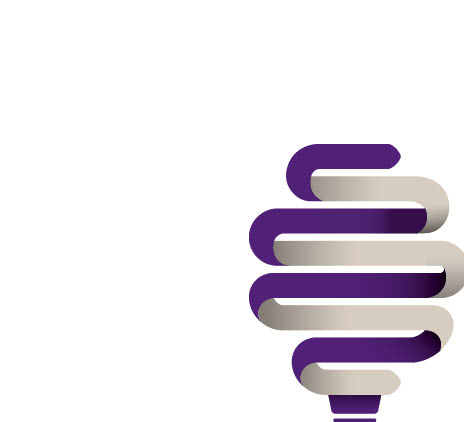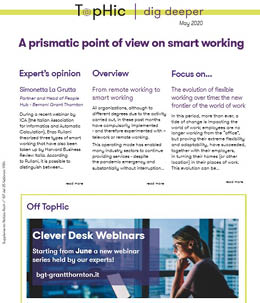-
Transactional advisory services
Find out more about the transactional advisory services of Grant Thornton Financial Advisory Services
-
Valuations
Find out more about the valuations services of Grant Thornton Financial Advisory Services
-
Mergers and acquisitions
Find out more about the merger and acquisition services of Grant Thornton Financial Advisory Services
-
Forensic and investigation services
Find out more about the forensic and investigation services of Grant Thornton Financial Advisory Services
-
Recovery & reorganisation
Find out more about the Recovery & reorganisation services of Grant Thornton Financial Advisory Services
-
Business risk services
Find out more about the business risk services of Grant Thornton Financial Advisory Services
-
Business consulting
Find out more about the business consulting services of Grant Thornton Financial Advisory Services
-
Capital market
Capital market
-
Corporate and business tax
Find out more about our corporate and business tax services.
-
Direct international tax
Find out more about our direct international tax services.
-
Global mobility services
Find out more about our global mobility services.
-
Indirect international tax
Find out more about our indirect international tax services.
-
Transfer pricing
Find out more about our transfer pricing services.
-
Litigation
Our lawyers and accountants can manage all defense measures provided not only by the Italian law, but also by EU regulations and conventions
-
Family business
Find out more about our Family business services.
-
Legal
The client can be assisted in every need and with the same care both on important operations or disputes and on simple matters

-
Back office outsourcing
Find out more about our Back office outsourcing services
-
Business process outsourcing
Find out more about our business process outsourcing services.
-
Compilation of financial statements
Find out more about our compilation of financial statements services.
-
Tax compliance
Find out more about our tax compliance services.
-
Electronic invoicing
Find out more about our electronic invoicing services
-
Electronic storage
Electronic storage is an archiving procedure that guarantees the legal validity of a digitally stored electronic document
-
Revaluation of corporate assets
Find out your civil and fiscal revaluation of tangible, intangible and financial assets
-
Payroll
Complete and customized payroll service, integrated with digital solutions and compliant with Italian and international regulations.
-
Labor consultancy
We help Italian and international companies manage all aspects of their workforce.
-
HR & Payroll Advisory Services
We review contracts, payroll, and risks for extraordinary transactions and we assess tax, labor, and safety risks in outsourcing contracts.
-
Extended services
We provide integrated digital tools to simplify HR management.
-
HR Infinity Portal
The HR Infinity Portal is Zucchetti’s platform designed to centralize communication between the company and its employees.
-
Cybersecurity
GT Digital helps clients structure information security management internal functions, also through partially or totally outsourced functions
-
Agile and Programme Management
GT Digital provides support in the adoption and implementation of different portfolio management
-
Robotic Process Automation
Our “BOT Farm” can rely on digital workers able to help clients in routine activities, allowing employees to deal with more added-value activities
-
Data strategy and management
GT Digital can support clients in seizing the opportunities offered by Big Data, from the definition of strategies to the implementation of systems
-
Enterprise Resource Planning
We support clients in selecting the most appropriate ERP System according to their specific needs, helping them also understand licensing models
-
IT strategy
GT Digital supports clients in making strategic choices, identifying innovation opportunities, comparing themselves with competitors
-
IT service management
We can support with software selection and with the implementation of dedicated tools for the management of ICT processes
-
DORA and NIS 2
The entry into force of the DORA Regulation and NIS2 represents a major step towards the creation of a harmonised regulatory framework
All organizations, although to different degrees due to the activity carried out, in these past months have compulsorily implemented - and therefore experimented with – telework or remote working. This operating mode has enabled many industry sectors to continue providing services - despite the pandemic emergency and substantially without interruption - preserving the health of employees, freelancers, collaborators, etc., as well as the existence of the companies themselves, allowing businesses to contain the risk of economic damages that would be difficult to reverse. Firstly, while approaching the subject in point, it is necessary to clarify the terminology.
Very often, lately, in order to define the work activity carried out in one’s own home, people have been using without distinction the term smart working, which, is indeed a method reserved only for employees, regulated under the Law no. 81/2017 and is an evolution of the concept of telework/remote working.
According to the definition formulated by Professor Mariano Corso, scientific director of the Smart Working Observatory of the Politecnico University in Milan, “Smart Working, or Agile Work, is a new managerial philosophy based on giving people flexibility and autonomy in choosing spaces, timetables and tools to be used in the face of greater responsibility for results.
A new approach to the way of working and collaborating within a company that is based on four main pillars: revision of the organizational culture, flexibility with respect to working hours and workplaces, technological equipment and physical spaces”. Smart working is, therefore, “intelligent autonomous employment by objectives”, already implemented and running for a long time in sectors such as software development, high tech, fintech and in activities that constantly interact globally1. Remote working, on the other hand, is similar to telework i.e. the delocalisation of work.
Again, in many ways we can say that we could define, more correctly, the phenomenon we are witnessing in this period, as emergency working2, as it is essentially a “unstructured” telework, not being organised and not being part of a medium-long term company strategy. Beyond the terminology, this operating mode has brought undoubted benefits, allowing us to gain a more widespread understanding of the advantages in terms of efficiency and effectiveness that can derive from it.
It has also allowed us to assess how the limits this working modality implies are in part non-existing and largely surmountable (we refer mainly to the employee’s absence from the place where the economic activity of the organization he/she belongs to is traditionally carried out). There is already a strong trend, at least in the intentions, to implement - once the emergency phase will be over - new organizational models that can get closer to actual smart working models, supported by comprehensive regulatory provisions, aligned with the transformed operating framework.

